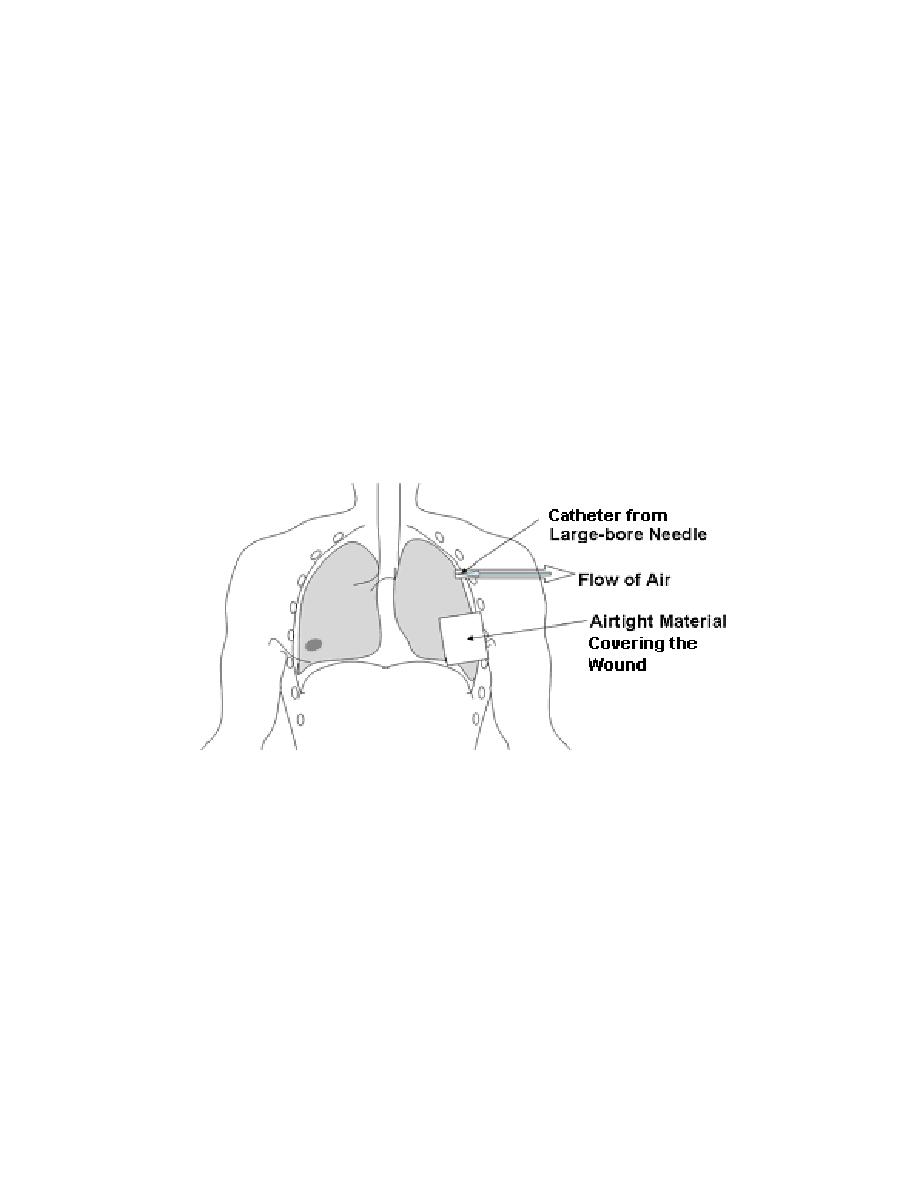
CAUTION:
Proper positioning of the needle is essential to avoid damaging blood
vessels and nerves that run along the bottom of each rib.
e. Withdraw the Needle. Withdraw the needle from inside the catheter while
holding the catheter hub to keep the catheter in place. The catheter will remain as a
means for air trapped in the chest to escape to the atmosphere.
f. Secure the Catheter. Use the strip of tape to secure the catheter hub to the
chest wall. Figure 4-7 illustrates a casualty with a catheter and flutter valve dressing in
place.
g. Monitor Casualty. By allowing trapped air to escape from the plural area,
the casualty's respirations should quickly improve. Applying airtight material over the
wound and having a catheter release trapped air permits the affected lung to re-inflate
somewhat (figure 4-7). If possible, monitor the casualty until medical care arrives or
until the casualty is evacuated to the nearest medical facility. Be prepared to take
measures to treat for shock.
Figure 4-7. Casualty with catheter in place to relieve tension pneumothorax.
h. Transport Casualty. If you have performed a needle chest decompression
on a casualty with a tension pneumothorax, he should be transported injured side up
rather than injured side down in order to allow access to the catheter during transport.
The casualty may also be transported in a sitting-up position if the casualty finds that
position more comfortable.
MD0877
4-10



 Previous Page
Previous Page
